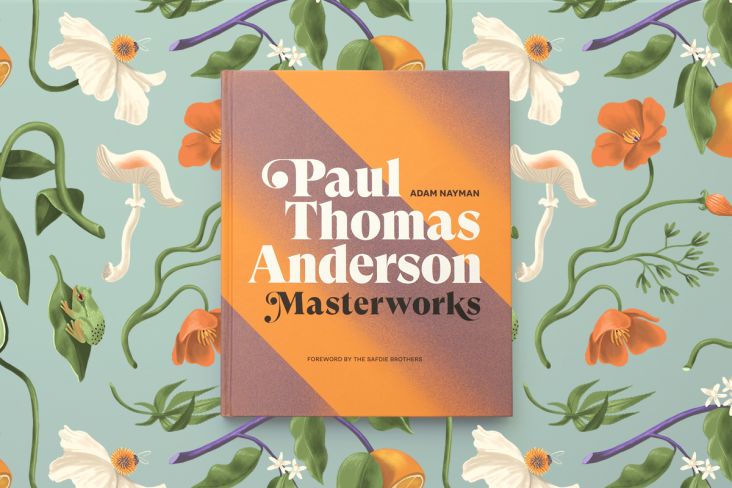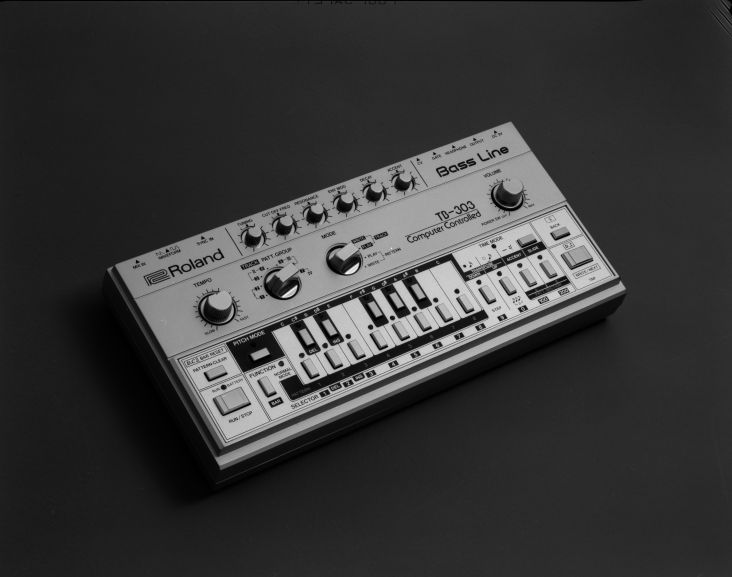The Sm;)e Book uncovers the storied history of the iconic smiley symbol
We see smileys everywhere – they're a staple messaging shorthand, and cultural signifiers unlike any other in that they represent multifarious different subcultures, movements, music scenes, drug scenes and more. They've played a central role in numerous films, comics, music video, record sleeves, artworks, fashion lines. Clearly, the yellow face is about a lot more than circles and cheerfulness.
Now, a new publication titled The Sm;)e Book is being released to celebrate the icon's cultural impact with a particular focus on its role in art and graphic design. Its creators – artist Rich Browd and DB Burkeman, a former rave DJ – have been working on this "passion project" for the past five years, aiming to "unearth the smiley face's complex and expansive history".
Among the artists and designers with work featured in the book are Alicia McCarthy, Jake & Dinos Chapman, James Cauty, James Joyce, Jeremy Deller, Fatboy Slim (who's been collecting smiley iconography for years), Rachel Maclean, Richard Prince, Wolfgang Tillmans and many others.
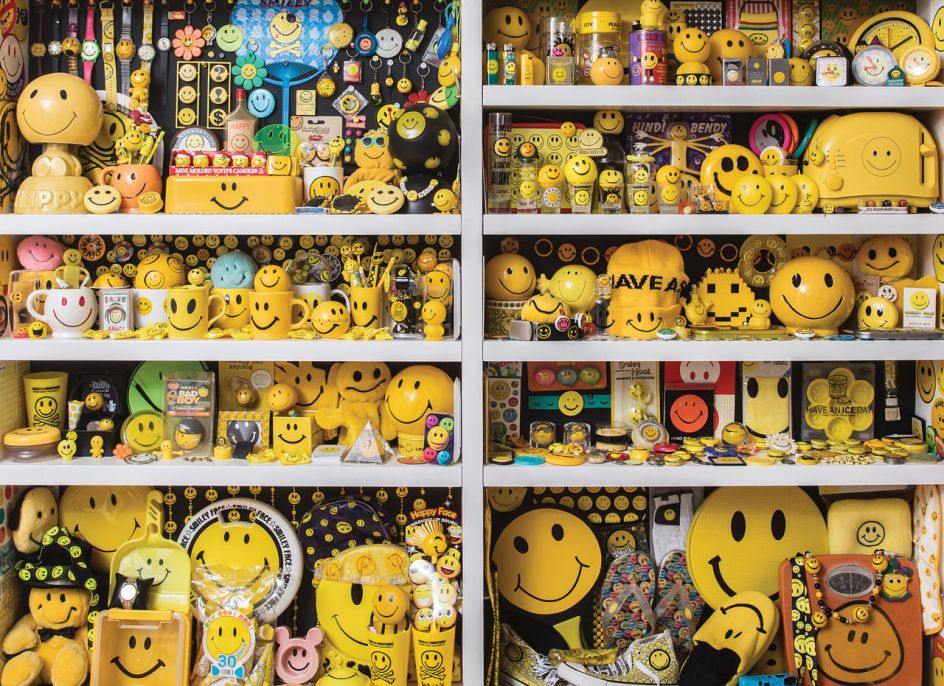
"In the history of Western graphic design, no other symbol has ever held such a duality: used simultaneously as a mainstream happiness driver on grocery bags and children's doctors' office stickers and as a coded signifier of counterculture lifestyles on rave flyers and underground tees," writes Browd in the book. "The smiley has been used for generations by corporate marketers, suburban families, hippies, punks, and acid house ravers alike."
He goes on to point out that the glyph has proven time and again to be a powerful piece of communication: "Sure, it might mean 'have a nice day’, peace, and any other number of uplifting sentiments, but it also began to be used as a tool to communicate the notion 'let's disrupt the norm'."
Burkeman adds, "In the history of graphic design, I can think of no other symbol that has ever held such a duality – used simultaneously as both a positive mainstream driver and a counterculture subverter of that very mainstream."
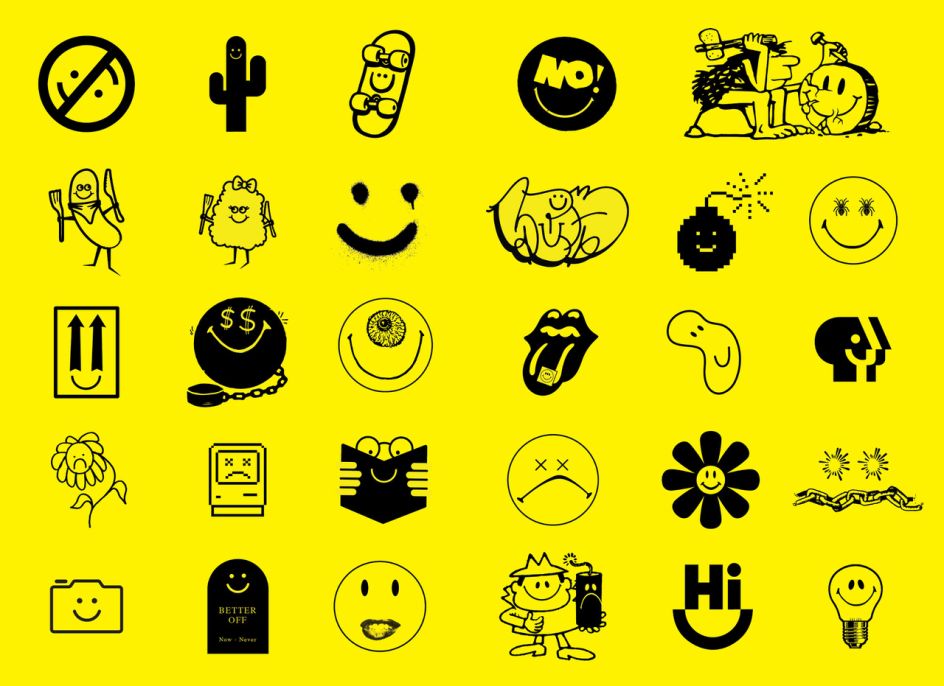
According to the book, the oldest piece of smiling-face imagery was discovered on a decorated pot dating back to around 1700 BC in Karkamış, Turkey. However, its first commercial use wasn’t until much later in 1919, thanks to the Buffalo-Springfield Roller Company which used the icon on its receipts. But unlike the simplistic yellow and black image we know today, this face was rather more detailed.
That familiar nose-less yellow face with black line work was born in 1963 when a man named Harvey Ball was tasked with creating a graphic to boost employee morale at an insurance company and paid $45 for doing so. While his face showed slightly uneven, oval-shaped eyes and an imperfectly curved mouth, today's ubiquitous symmetrical design arrived in 1970 in the form of novelty items produced in Philadelphia by brothers Bernard and Murray Spain. They used the smiley on badges with the phrase "Have a nice day", a design which rapidly caught on. Its explosion also saw the brothers get in hot water with the law: French journalist Franklin Loufrani had used the symbol in the newspaper he worked for to indicate good news and had regifted the symbol with the French trademark office.
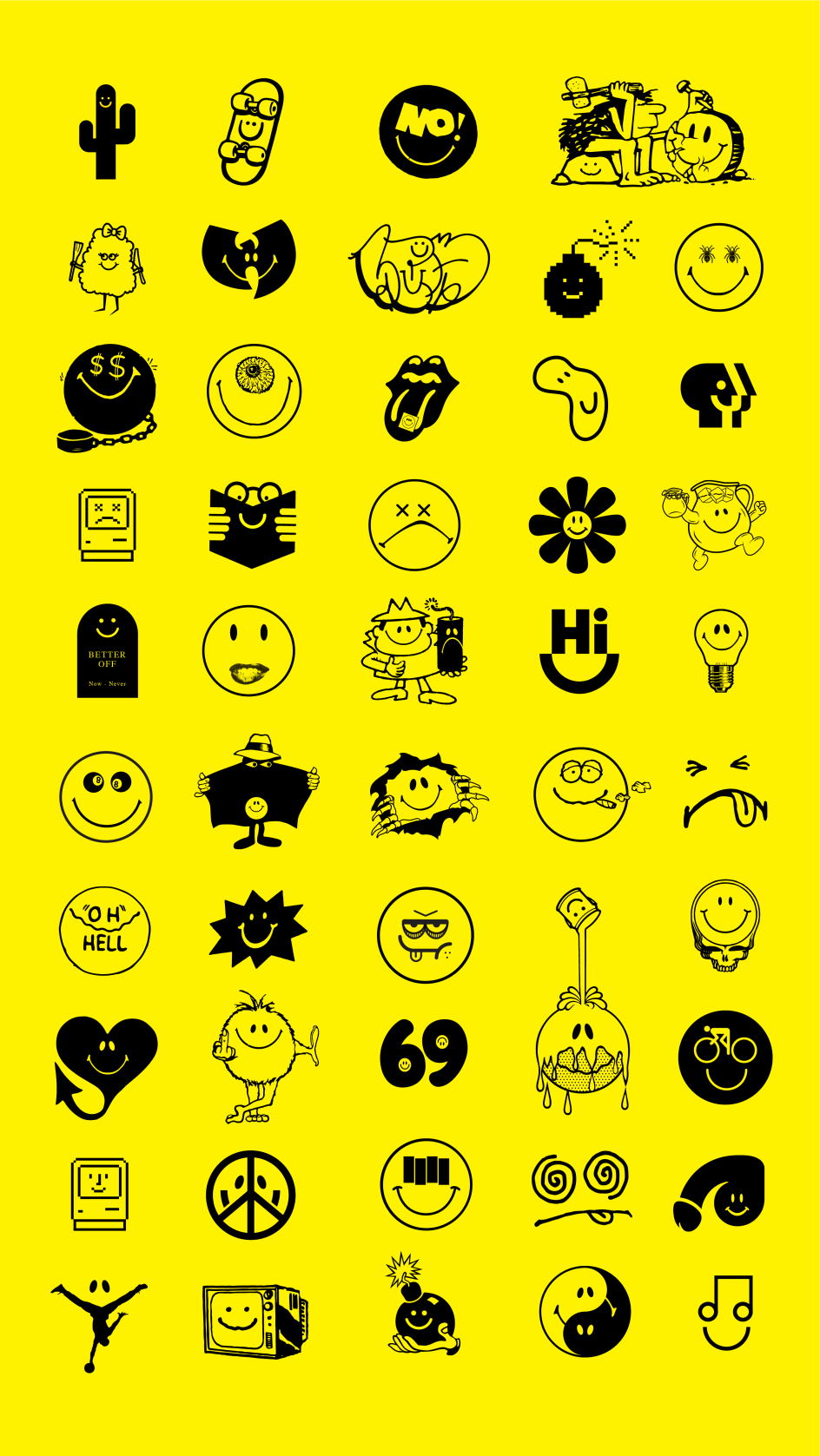
The sign soon found its way into comics: Robert Crumb was using it in his comic Mr Natural as soon as 1971; then in 1986, the smiley took on one of its most famous guises in Alan Moore and Dave Gibbons' Watchmen, which used a blood-splattered smiley pin on the cover and throughout the story itself.
Among the smiley's numerous appearances in music are on the 12-inch single version of Talking Heads' Psycho Killer: a man sporting an oversized, distorted version of the smiley on a t-shirt is used on its sleeve. A couple of years later in 1979, punk band Dead Kennedys' debut single, California Über Alles used a sleeve showing a collage with California governor Jerry Brown in front of a Nazi rally with banners showing smileys instead of swastikas. Here's a lovely snap, too, of T-Rex's Marc Bolan sporting a smiley top.
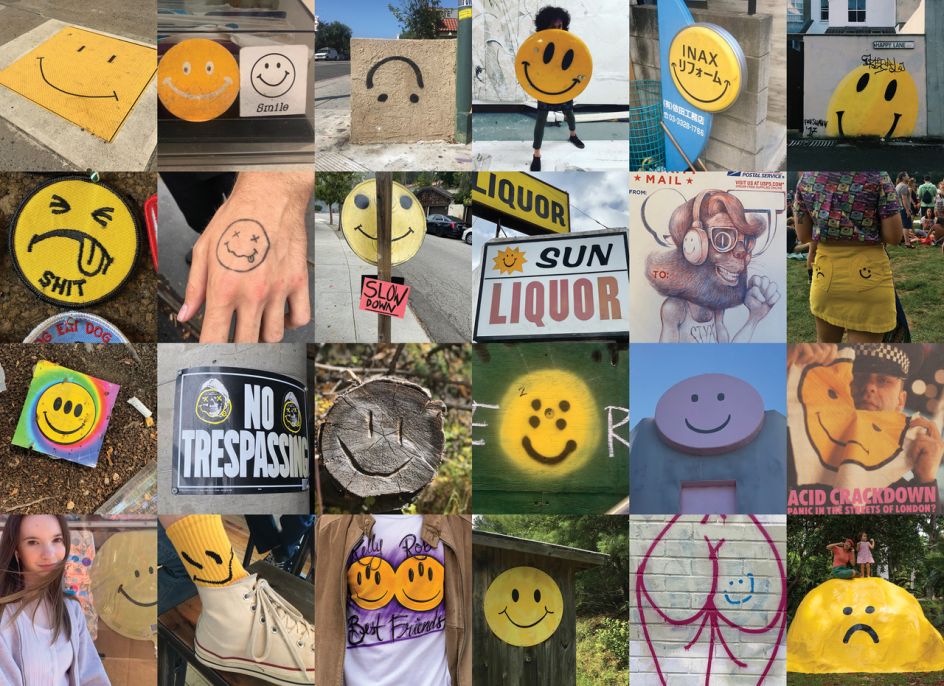
Spearheading what's arguably the most iconic usage of the smiley in subcultures, in 1987 DJ and promoter Danny Rampling opened the acid house club Shoom in London, which used the symbol on its flyers, membership card and interior decorations (a very DIY partition curtain). Rampling said he wanted to convey that the acid house and early rave movement was all about: "big smiles and positivity”. The wee yellow circle then, well, mushroomed when it came to its adoption by rave culture, and subsequently was adopted by its many subgenres such as hardcore. Dave Nodz, the resident visual artists at key hardcore label Suburban Base, created a superhero-comic-style character that had a smiley ball for a head, who starred in many of the label's record covers featured on several record covers.
These usages barely scratch the surface of the smiley's storied history, and the book details countless instances of its adoption in film, fine art, TV shows like The Simpsons, and music videos including the 2015 hit for David Bowie's Blackstar.
The book, according to its creators, is aimed at "anyone who appreciates this iconic image of joy (as well as those who love cheeky culture jamming and logo flipping), whether you're a raver, store owner, plastic bag collector, or just a fan of the face." They add, "Who knows what the future holds for smiley? With the world so upside down, we simply hope that artists and designers keep being creatively inspired to use it!"
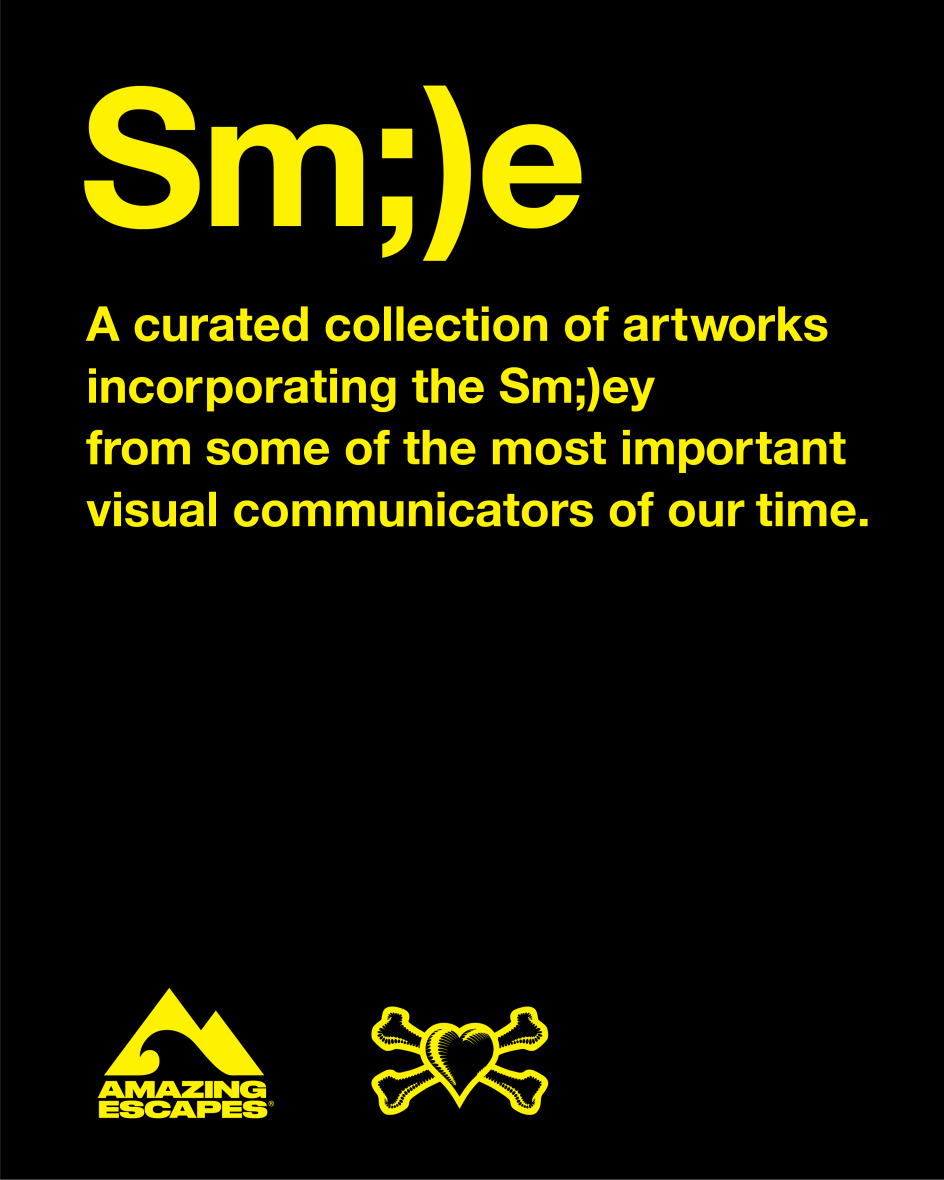





 by Tüpokompanii](https://www.creativeboom.com/upload/articles/58/58684538770fb5b428dc1882f7a732f153500153_732.jpg)


 using <a href="https://www.ohnotype.co/fonts/obviously" target="_blank">Obviously</a> by Oh No Type Co., Art Director, Brand & Creative—Spotify](https://www.creativeboom.com/upload/articles/6e/6ed31eddc26fa563f213fc76d6993dab9231ffe4_732.jpg)








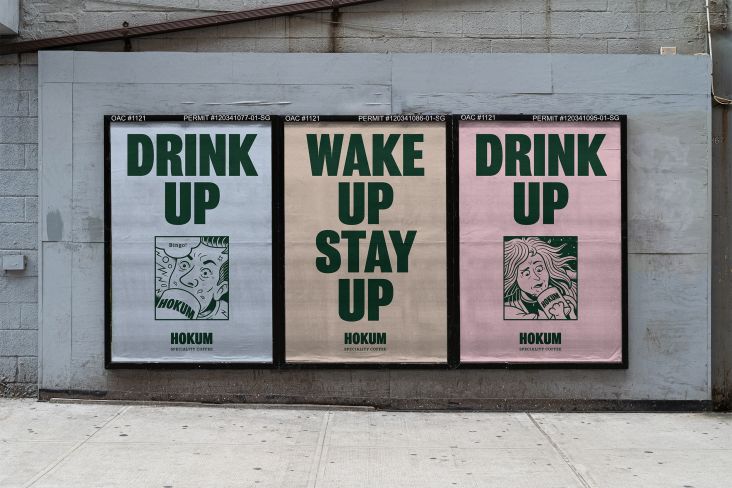

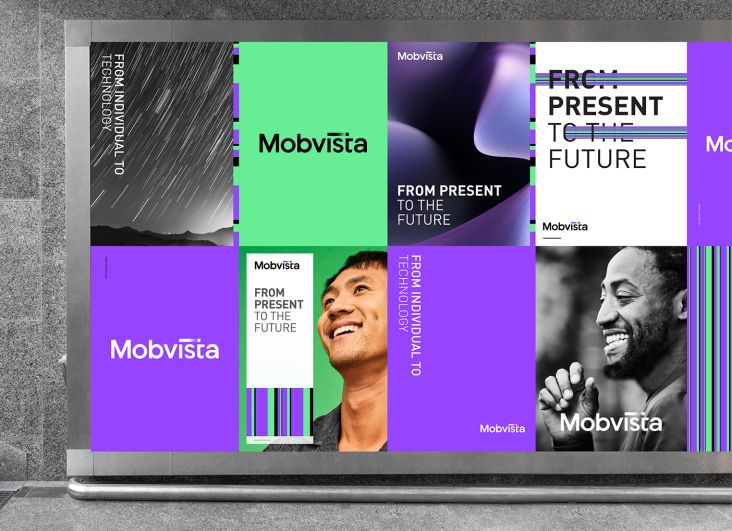
](https://www.creativeboom.com/upload/articles/ef/ef634d2391f54aafcbb9970e60b53bb3f003e681_732.jpg)

